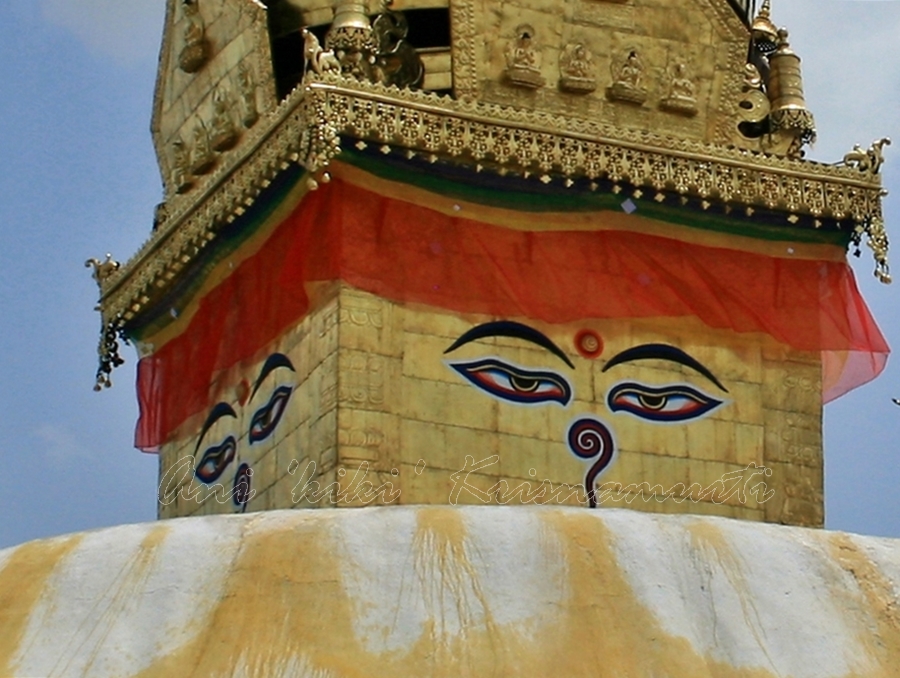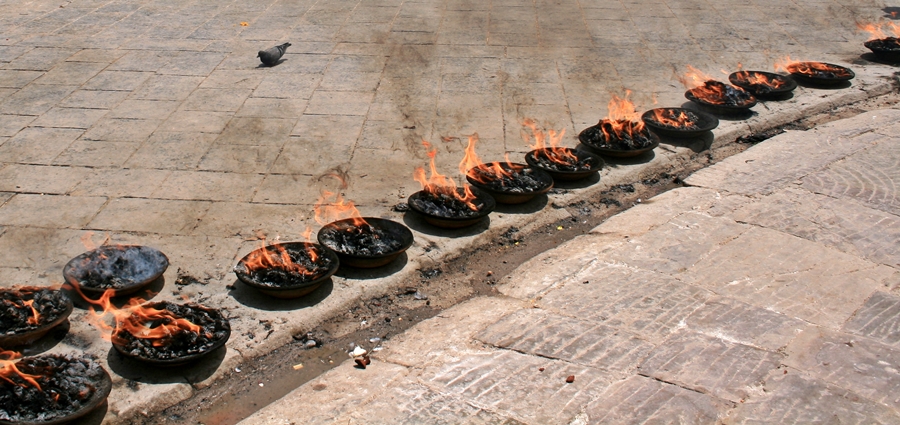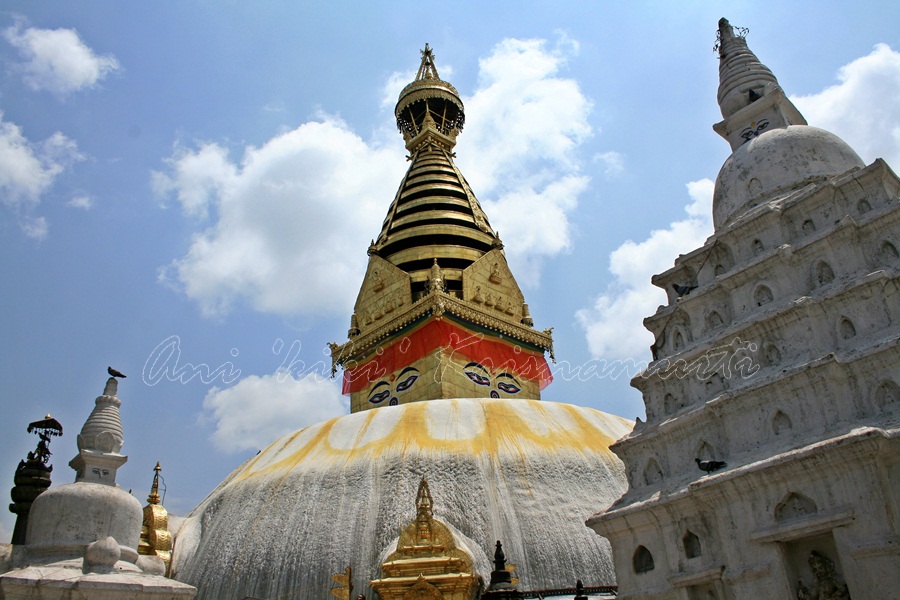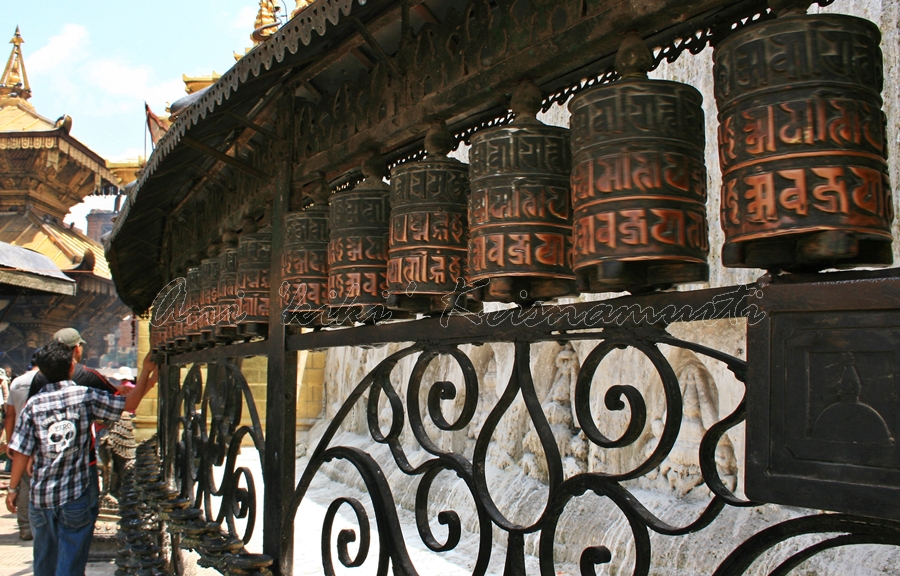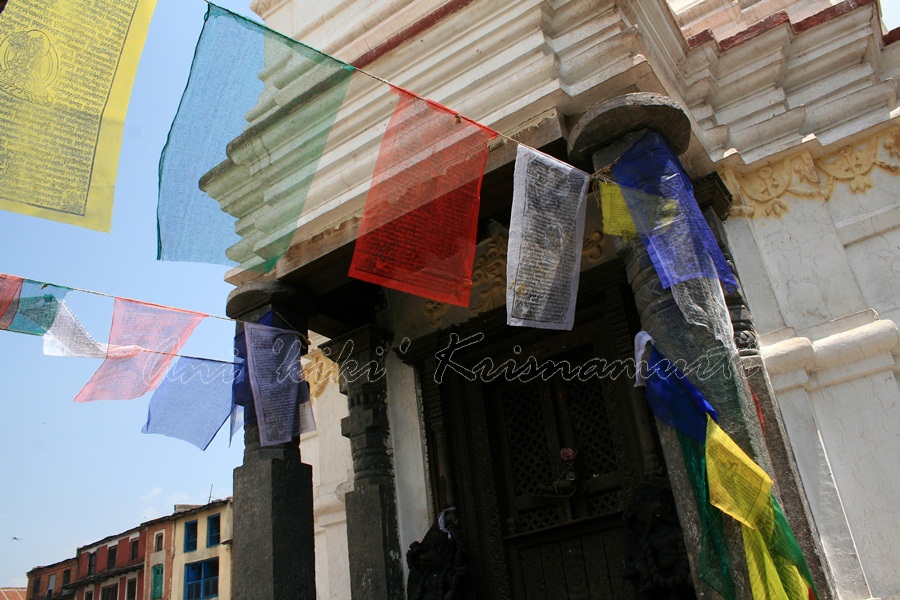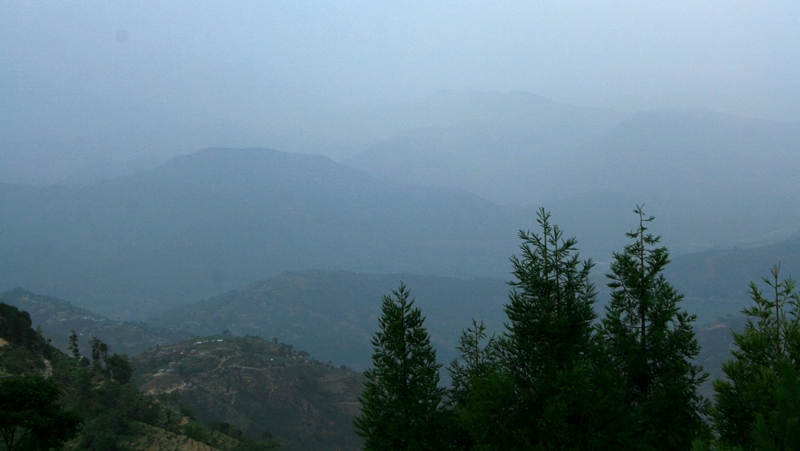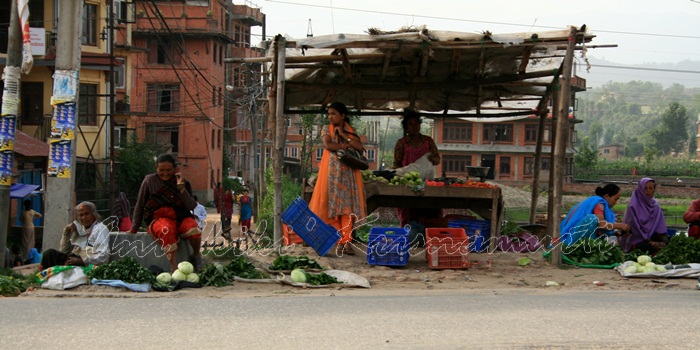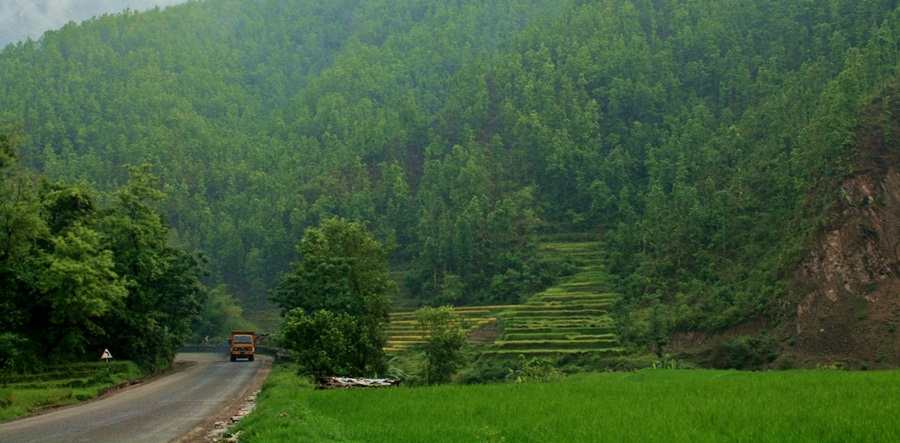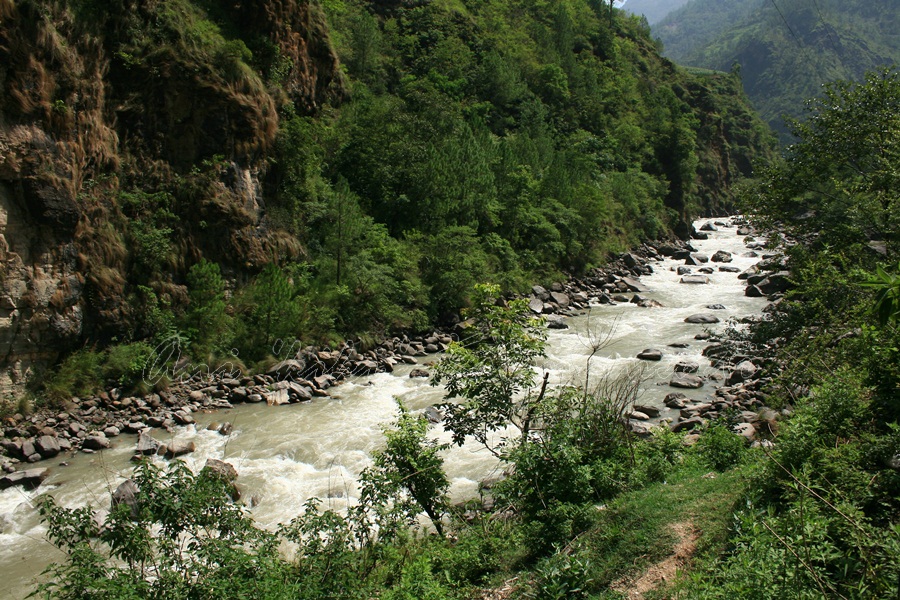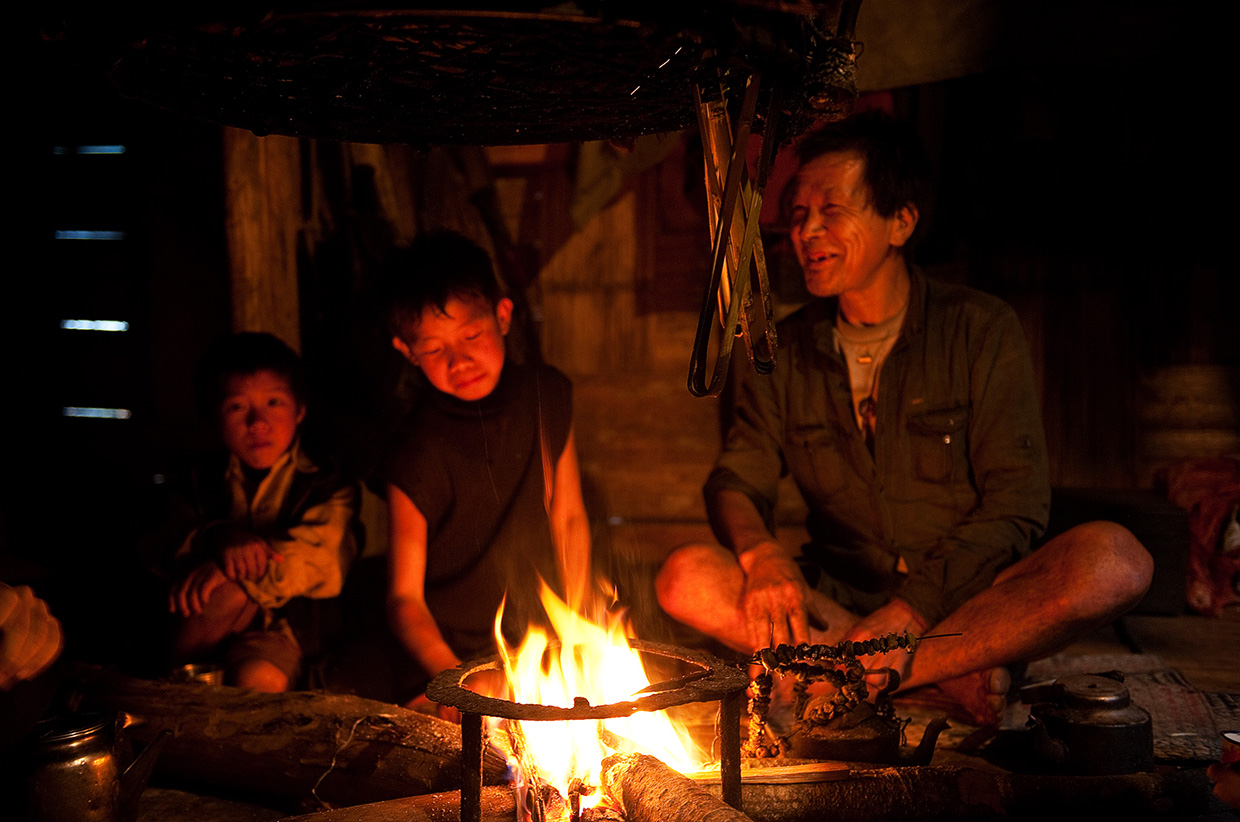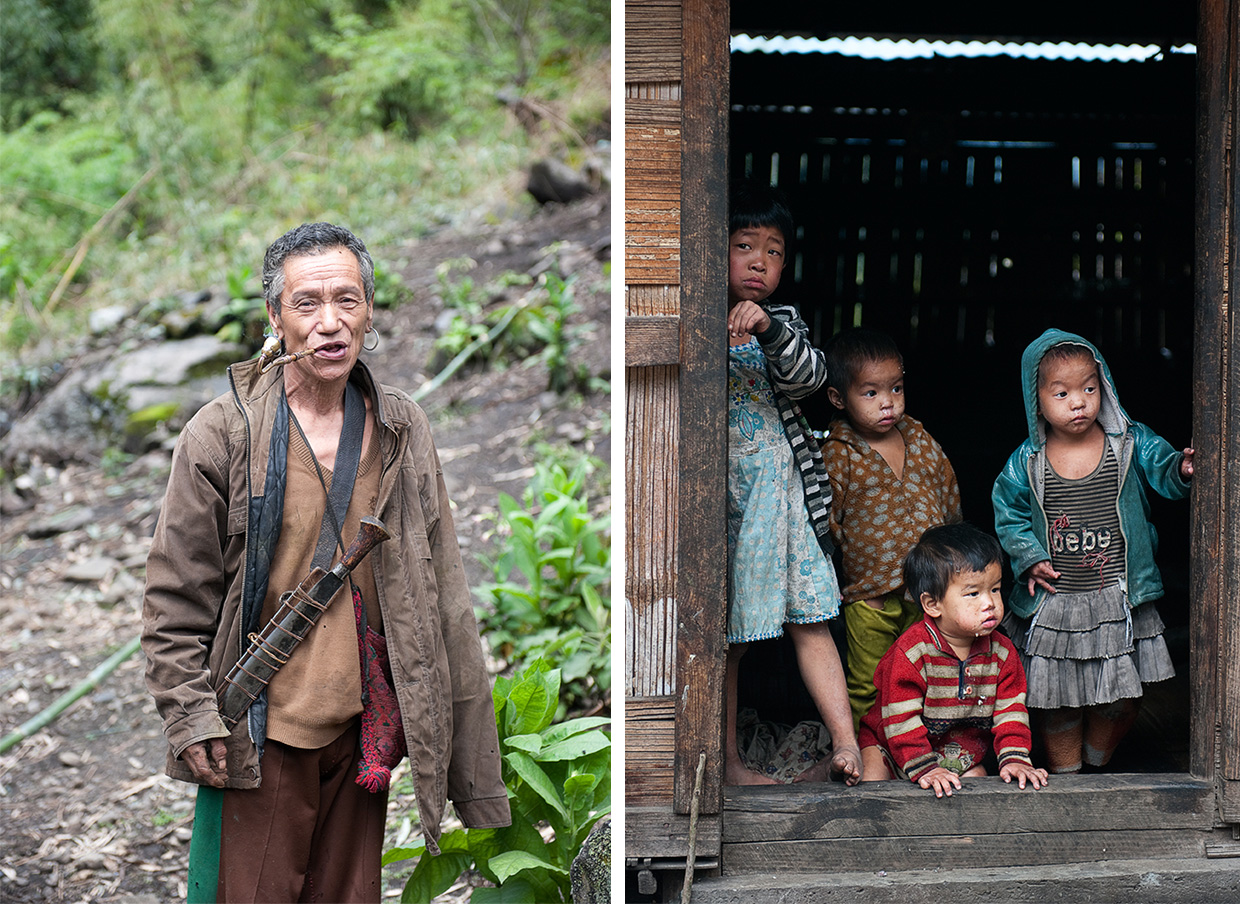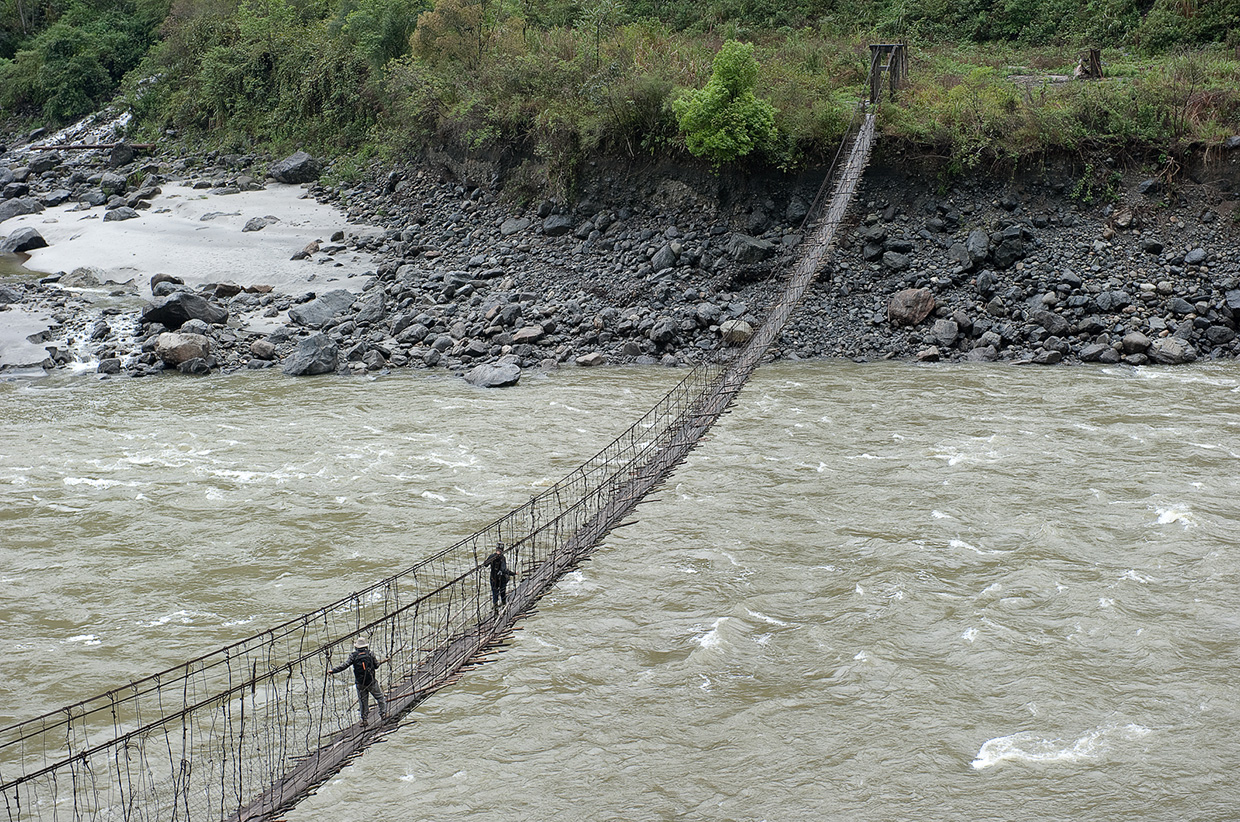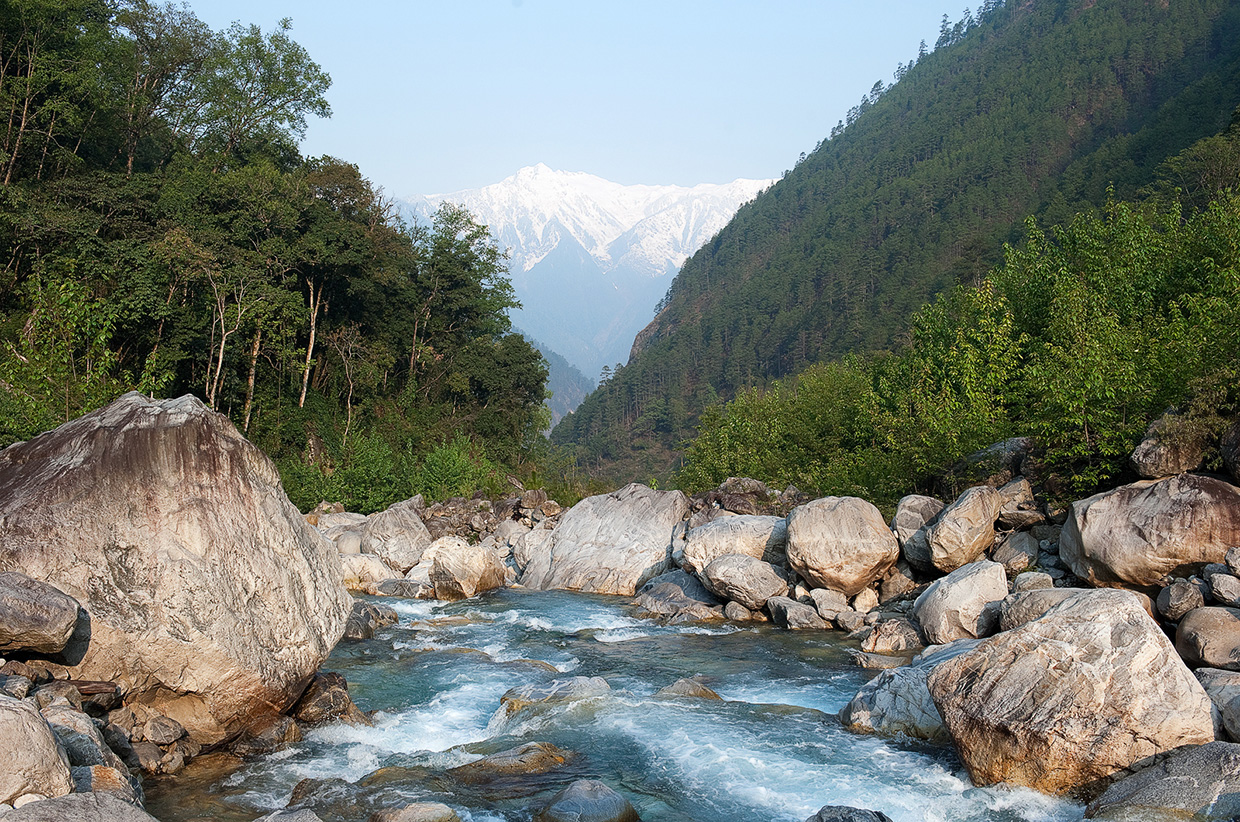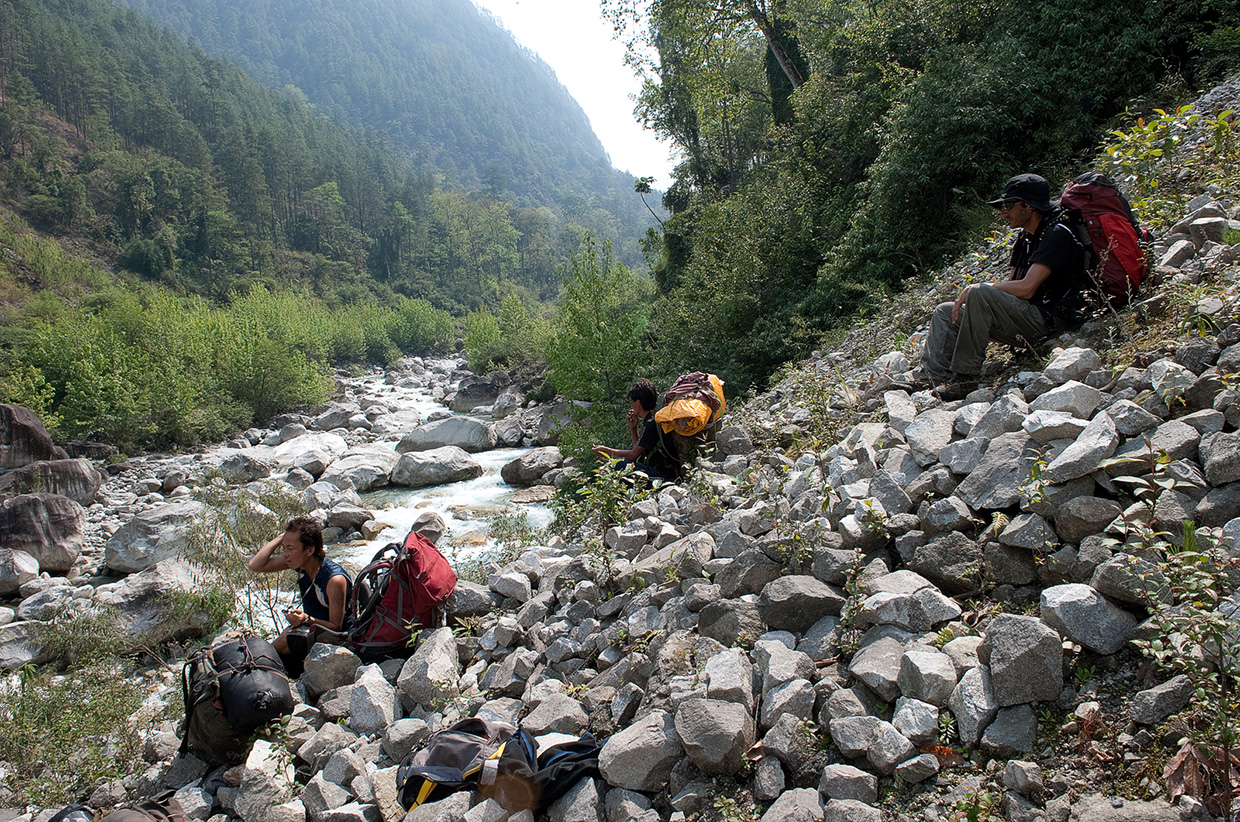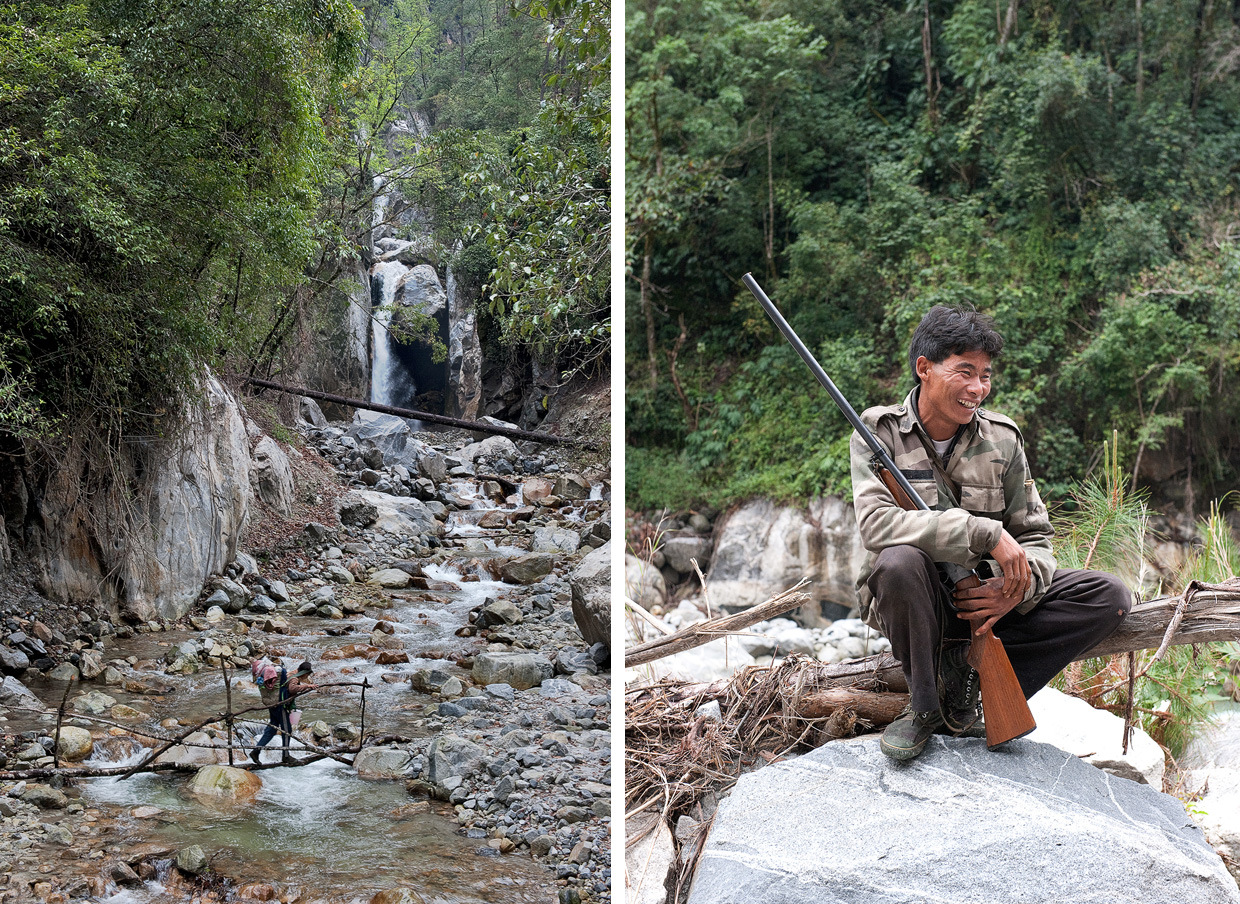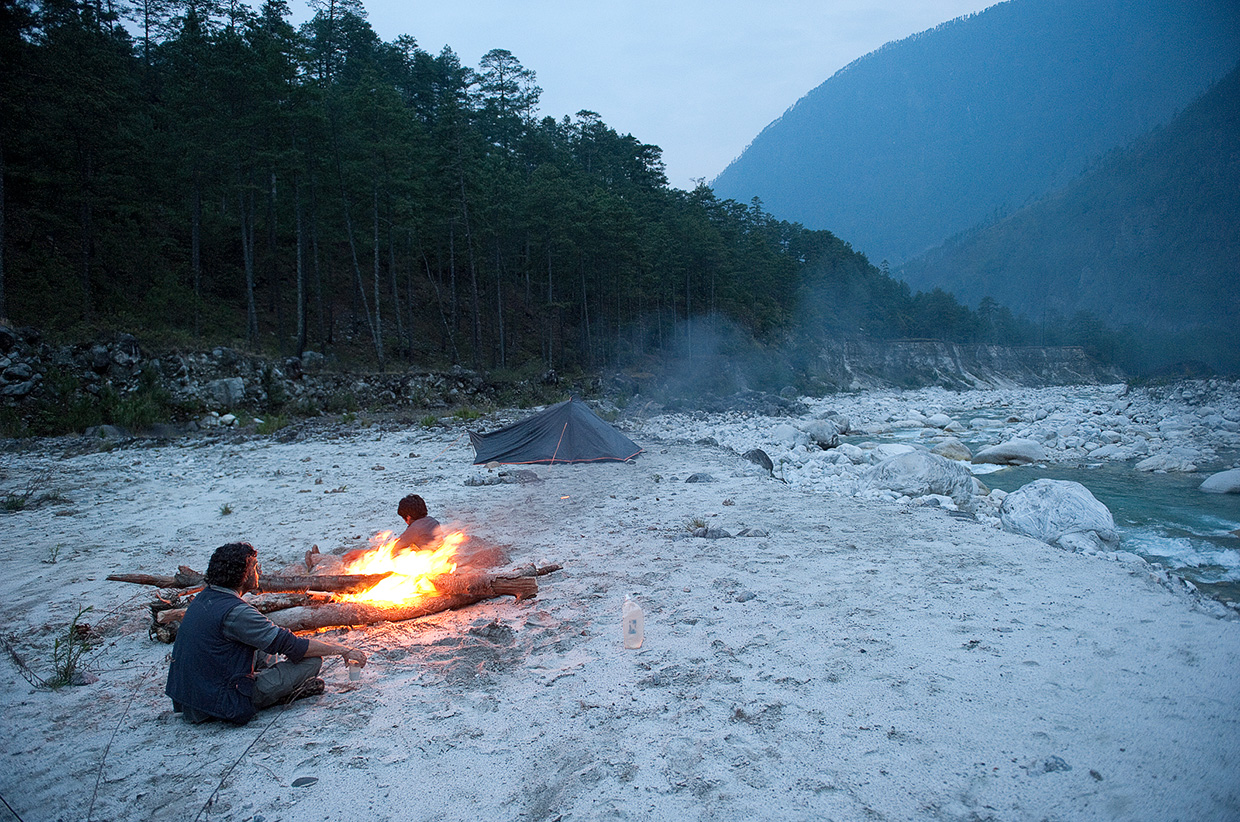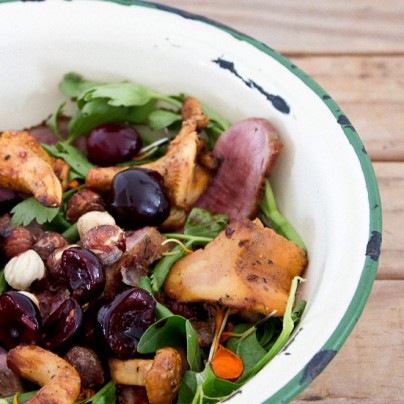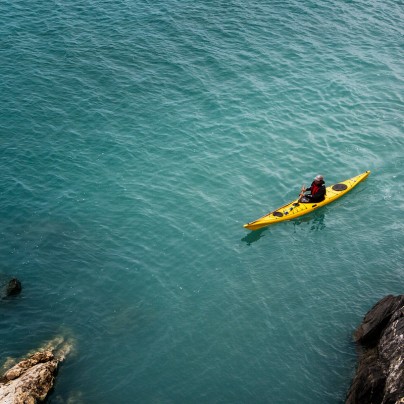Great Herbal Sourcing Is the Secret of Great Herbalism
ront
May 2, 2012
By Ron Teeguarden.
©2001, 2012 Ron Teeguarden
The “Earth Tao” Principle – Di Tao
Thousands of years ago, great Chinese sages developed a system for
understanding “the Way of Nature”. The overall philosophy has long been
known as Taoism (the Ultimate Way). The same enlightened masters also
discovered and described various profound concepts that explain how
Tao is manifested here on earth, including the “
Great Principle of Yin-Yang”,
Wu Xing (the principle of the Five Elements),
San Jiao (the principle of the Three Treasures), and
Feng Shui
(literally “wind-water” – the laws of environment, spatial
relationships and fortune), to name a few. There is another great and
ancient concept in China known as “
Di Tao.” Like
Yin-Yang and
Feng Shui,
Di Tao (pronounced
dee dow) is a term that has been central to fundamental life choices in China for millennia. The literal translation of
Di Tao is “Earth Tao,” or “the Way of the Earth.”
The term
Di Tao describes the “original,” “perfect” or
“natural” source of any natural object or substance. This could relate
to food, an herb, a cloth such as silk, an essential oil, salt, a honey,
a spice or any other natural “product.”
In the modern Chinese dictionary,
Di Tao is translated as follows:
From the place noted for the product ~ genuine, authentic, and not from an inferior or counterfeit source.

In China,
Di Tao is a very important concept. Herbs grown in
the wrong environment are not acceptable in the Chinese herb trade or
for use in pharmaceuticals and herbal medicine. The principle is central
to tonic herbs and superfoods. Every plant has its perfect habitat
where the plant flourishes, and in the case of an herb or food, becomes
the most phytochemically rich and balanced. I am not going out on a limb
when I say that virtually every adult in Asia understands
Di Tao. In America, on the other hand, few people know of or appreciate the concept – yet!
There is no question that locally grown fruit and vegetables and
other products are important in our lives. Consuming local foods are
essential to adapting to the local environment. But tonic herbs and
superfoods are somewhat different. It is the Jing, Qi and Shen that they
contain that sets them apart from the “same” herb grown in non-
Di Tao locations. The chemistry, energy, vibration and potency of
Di Tao herbs is never matched by non-
Di Tao herbs.
Never. That’s why maca comes from Peru and chocolate comes from South America.
Why Di Tao Is So Important to Those of Us Who Use Tonic Herbs
Over the period of 40 plus years, I have learned that where an herb
comes from is generally the single most important factor in determining
its potency, balance, taste and benefits to the user. Especially in the
world of tonic herbs and superfoods, the source of the material is
nothing less than critical.
Over time, a connoisseur of herbs learns to recognize quality by
observing the appearance, aroma, texture, color and taste of an herb. An
expert can recognize quality in this way. But these attributes can be
deceiving. Expert farmers can grow beautiful looking herbs that are in
fact hollow in terms of their chemistry and resulting effects on the
body-mind of the user. So actually testing the herb is critical. Still,
the source usually determines all.
Chemical analysis is also an important method of determining the
quality of an herb. But it is a highly over-rated method. Generally one,
or maybe two, chemicals are established as a “marker” for an herb, and
herbs are sold based on that marker. This can be very misleading. Herbs
are complex, and some are VERY complex. Reishi mushroom, for example,
has over 800 known pharmacologically active constituents. Many of them
play roles in the benefits attributed to Reishi. The quantity of certain
constituents matters, but so does the quality of these constituents.
And the ratio of these constituents may play an essential role in
whether an herb does something or not, or does it well. To sell Reishi
or any other herb based on narrow standardization (one or two marker
constituents) is just a trick.
However, I can tell you that if Reishi mushroom comes from the
Changbai Mountain Biosphere in Manchuria, it is probably superior to any
other Reishi around. And if it was grown at high altitude on Changbai
Mountain, that it is probably
primo material. Then by looking
at it, smelling it, and tasting it, you can determine if it is the best
the Changbai Mountains have to offer. You can tell if it is wild or
cultivated, naturally grown on natural wooden logs (good), or
artificially grown in a hot house on rice hulls and sawdust (not good).

Chinese herbalism is very big business in Asia – much bigger than it is
in America. Chinese herbs are consumed by hundreds of millions of people
on a very serious level. The Chinese have tremendous experience with
herbs – and they know what is good and what isn’t. The Chinese
government employs thousands of researchers and administrators to
oversee the herbal and pharmaceutical trade in China. According to
regulations of the Chinese Ministry of Health, all herbal products
manufactured and sold in China must utilize herbs that are
Di Tao – that is, the herbs
must come from sources that are considered
genuine and
legitimate.
By imposing strict regulatory controls over where an herb comes from,
the government assures that the quality of the medicines and tonics sold
in China meet the needs of “the people.” However, it is not illegal to
sell non-
Di Tao (sourced from non-authentic sources) herbs to
foreigners who don’t know better. As a result, many (most) American herb
companies buy and sell non-
Di Tao herbs, wittingly or unwittingly.
Here’s the Secret to Dragon Herbs Quality
Our customers frequently ask us what it is that makes our herbal
products so much more effective than all the other brands of herbs on
the market. I’m going to let you in on our secret – it’s our
strict (obsessive) adherence to the principle of
Di Tao.
That is why the herbs sold at Dragon Herbs work better than the herbal
products produced by other companies. Of course, there are many reasons
why, including purity, production technology and freshness – but the
correct
sourcing of our herbs is
fundamental. That is
why I travel to all areas of China, and for that matter the world, to
find the best herbs in the world. I’m practicing
Earth Tao. I’m seeking the world’s greatest herbs from the
recognized-best locations, from
Di Tao locations. You can have the best technology money can buy, but if the raw material is not
Di Tao ,
it is virtually impossible to produce products with the subtlety and
potency that we all want. You cannot spin gold from straw. With
Di Tao herbs, our job of producing superior herbal products becomes easier and supremely satisfying.
It is not really hard to find out where the best herbs come from, but
you DO have to have an ear for it. Most suppliers have heard about the
Di Tao
sources of the most important herbs, but they don’t understand or
respect the principle, or don’t have the will power to go get it. I
admit, it’s not easy to get
Di Tao herbs. It’s
much
easier for herb manufacturers to obtain lower grade herbs grown in
commercially accessible locations that are closer to cities. And it’s
often much cheaper since the commercial grade herbs are much more
abundant and therefore much less expensive. But the added effort and
expense of getting
Di Tao herbs is well worth the price paid in terms of money, effort and the ultimate benefits.
Di Tao herbs provide TRUE VALUE.
Going Di Tao
Most of the
Di Tao herbs come from VERY REMOTE regions of
the world. Often it takes days or even weeks of travel by all sorts of
transportation to get to a
Di Tao location. These trips are
often very arduous, and sometimes they’re very dangerous. I’ve come
close to dying five or six times, either at the hands of humans or due
to the extreme elements, or simply due to conditions as they arose. I’ve
seen terrible floods and many landslides, and I’ve encountered
less-than-friendly road warriors on several occasions. I’ve encountered
mobs and looting, and have been robbed at least five times (I’ve lost
track). I’ve encountered snakes, leeches and scorpions. I’ve ridden on
buffalo, yak, horses and camels (no complaints). Much worse, I have
ridden for hundreds of miles in cars with no shock absorbers on roads
rougher than the moon’s surface, and by drivers who refused to turn
their headlights on even in the middle of the night on one-lane mountain
roads with no railings and thousand foot drops (sometimes in driving
rain). I’ve had a knife pulled on me because I took a photograph of a
man’s pig, and a knife pulled on me because I challenged a large-cat
poacher.
I’ve been forced to eat fish eyes, bull testicles, scorpions, giant silk worms, entrails and
many
unknown and terrible tasting things so as not to insult my hosts. I
have been to extreme altitudes, to remote deserts, and to literally
un-charted forests where the locals had never seen a television or a
tube of toothpaste, but all claimed to have seen a Yeti. I have twice
been caught right in the middle of violent street riots in remote
Southeast Asian countries. I have been to the deepest jungles, and have
been in the hands of psychic surgeons. I have been lost in a jungle
region of the Philippines controlled by Maoist rebels that would have
been thrilled to have captured an American. While visiting our Heaven
Mountain Goji farmers in Central Asia, I stayed in a city that was
blacked out for the entire three days I was there (no restaurant, no
showers, no heat and no locks on any doors). I experienced a deep
puncture wound in my leg and took care of it with local herbal remedies.
I have been on some of the craziest airplane rides and have twice been
on excursions where the planes were forced to land due to extreme
weather conditions (very frightening) – once in Central Asia and once in
Myanmar (Burma). I have witnessed first hand the horrible floods that
took thousands of lives in India and Myanmar. I have been cauterized,
punctured and poisoned. But really, I don’t have any complaints.

I have been to the back streets of remote cities and towns, to night
bazaars and peasant markets, and have bought the most exotic things from
street vendors. I have had the opportunity to collect some of the most
amazing amulets, artifacts, sacred art and other relics imaginable in
these remote markets. I happened to be in Shanghai the very day it
officially became an “open” city, and got to experience and witness a
state of elation that I had never seen nor have I ever seen again – the
moment of liberation by a whole society (“priceless!”).
Of course, I have been honored to have spent time with some of the
greatest herbalists in the world, and have been even more honored by
having them visit me. I have walked with them in the forests and in
their gardens. I have been in their crazy-amazing workshops and
herbariums (where they collect and display their herb samples). Once, I
met China’s most respected herbologist on a flight from San Francisco to
Beijing. Xiao Peigun is arguably the most powerful and brilliant
herbalist in the world. By coincidence, I sat next to him on the flight
and happened to have an article he had authored on anti-aging Chinese
herbs with me in my travel bag. We became friends for life and he has
turned me on to innumerable resources and opportunities. In Nanjing, I
met Professor Xu Guo-Jun, the most honored herbologist in the modern
era. He was quite elderly, but took a liking to me and appreciated my
tonic approach to herbalism. He ultimately wrote the preface to my book
“The Ancient Wisdom of the Chinese Tonic Herbs,” which is one of the
greatest honors I have ever received. Most Westerners don’t understand,
but Chinese people everywhere know him by reputation. He passed away
soon afterwards.
I have been in the homes and enjoyed the hospitality of amazing
families. They have shown me their treasured relics, hidden safely below
their floorboards. I have meditated in awesome Himalayan monasteries. I
have spent hundreds of days with my remarkable Chinese in-laws, herbal
scientists both, and great, great people to boot. They have guided me on
my path to find
Di Tao herbs.
I have seen lands that are like Shangri-la, and have encountered some
of the most beautiful, generous and wise people you can imagine.
Actually, much of my experience has been like that. I have eaten the
most delicious food, prepared in the homes of peasants and the wealthy. I
am surprised at how often I have been served awesome wild vegetables
and herbs. Eating local wild vegetables and fruit is absolutely common
in the countrysides throughout Asia.
Di Tao herbs have been my ticket to places Westerners almost
never see. I have been inside temples and shrines that few outsiders
have ever entered – including the Great Royal Stupa in Thimphu Bhutan. I
got to go inside the stupa with the reincarnated Karmapa, who walked me
to the top, via the ancient spiral staircase, to see (and be in the
presence of) “the great secret” that rests there. I have shot pool and
discussed the state of the world with a Bhutanese prince, and I have had
tea with the Prime Minister of Bhutan in his personal office. I have
been in the homes, caves and shrines of amazing people in some of the
most remote societies on earth. I have been to remote grottos with
ancient eighty-foot Buddhas that were so far from modern civilization
that there were no visitors but me and my party.

Because of my
Di Tao approach
to herbalism, I gained entry to the inner sanctums of the ancient and
venerable Shaolin Temple, the birthplace of Zen Buddhism and of Kung Fu.
I have wandered vast undisturbed biospheres (many) and exquisite botanical gardens (many). I have meditated and done
qi gong
on mountain tops from whence you could see a hundred miles of nothing
but other mountain peaks enshrouded in clouds. I have spent nights at
Buddhist and Taoist monasteries – and I have spent nights at some of the
scariest “hotels” you can imagine. I have also spent many a night at
remarkable, exotic five star hotels in various paradises. In Bhutan I
stayed at a hotel where the only electric plug in the bathroom was in
the shower! I have also encountered magical healers and shaman, and I
have seen and participated in dreamlike spiritual rituals. I have met
many genuine mountain hermits, including cave dwelling Taoist recluses. I
have been to vast bamboo forests, and in caves inhabited by crazy
monkeys and millions of bats. I have plucked wild herbs and gleaming
rocks from mountain peaks and deserts, hundreds of miles away from the
nearest stop sign. I have drunk from the gushing spring marked by the
calligraphy written hundreds of years ago by hermits with the words
“drink this water and live forever.”
The remoteness of these
Di Tao regions is what makes them
great for herbs – no industrial pollution, unconventional natural
farming and wildcrafting, and all the natural power of
Tao. Indeed the remoteness prohibits most people from getting these
Di Tao herbs.
I have gotten into these places because of my knowledge of, and dedication to, the principle of
Di Tao.

The Usual American Approach to Herb Sourcing Herbs
Here’s how companies make products that are NOT Di Tao. A
representative of the company gets on the phone and calls a domestic
herb broker and orders herbal and other ingredients based on price and a
“standard.” The price is generally the key concern because most nutraceutical companies believe that most customers are mainly interested in price (not knowing how else to judge “value”).
The issue of standardization is a big issue. You should know that most herbs are very complex and contain numerous
active constituents. For the sake of the industry and for easy
marketing, one “active constituent” is generally selected as the
“standard” and the product is manufactured (or manipulated) to match
that standard. It is not the best way to judge the value of an herbal
product, but it is easy for the industry. 99% of all commercial
(industrial) herb buyers in this country have never been to a Di Tao location (most don’t even know of the concept). As a result, most consumers have not consumed really great tonic herbs.
The end result is that there are thousands of nutraceutical and
herbal products on the market, but most are of mediocre or low quality
and of limited or no benefit.
|
The Di Tao of Some Important Tonic Herbs (Examples)
Every herb has
Di Tao sources and non-
Di Tao
sources. In Asia, and in many other regions of the world where herbs
play a big role in the health care network of the society, the
Di Tao concept is universally acknowledged and widely applied. Here are some examples:
The Di Tao of Ginseng
One Chinese medical dictionary defines
Di Tao as “The original and authentic source of an herb, as Changbai Mountain is
Di Tao for ginseng.”
Ginseng is one of the most highly revered and widely used herbs in
the world. People in Asia ALL know that the best ginseng comes from
Changbai (“Always White”) Mountain, a remote and pristine volcanic
mountain range in the northwestern Chinese province of Jilin
(Manchuria), directly north of North Korea. This stunningly beautiful
mountain is a protected “biosphere” (certified and by the United
Nations) where industrialization is forbidden and all species of fauna
and flora are protected.

It
is believed that ginseng originated in this region. Like many major
herbs, altitude makes a difference in the potency of ginseng. The higher
up Changbai Mountain ginseng grows, the more potent and effective it is
as an anti-aging, vitalizing, life-promoting tonic. Ginseng still grows
wild in the dense forests of Changbai Mountain. The forest is so vast
and dense, that it is easy to get lost in it. Ginseng hunters must watch
for Siberian tigers, other large wild cats and bears. Though the entire
province of Jilin is officially considered
Di Tao for ginseng,
as is the province further north (Heilongjiang province, also known as
Chinese Siberia) ginseng connoisseurs all know that Changbai Mountain
ginseng is the best, true
Di Tao. The Chinese emperors of old had their
personal
ginseng farms near the top of Changbai Mountain, and today all the
premium grade Chinese and North Korean ginseng comes from this
incredible mountain (Changbai Mountain is half in Manchuria and half in
North Korea).
Knowing this, many years ago, Yanlin (my wife and partner) and I
traveled to Changbai Shan (as it is called in Chinese) for the first
time, to source out the ginseng we would use to make our Dragon Herbs
products. That first trip was marked as one of the times we nearly died.
A huge mountain thunderstorm washed away our primitive mountain road.
Our driver’s headlights blew out in the storm and we barely missed
tumbling thousands of feet off a cliff in a mud slide. But we came back
with a supply of wild ginseng roots that we collected at the top of the
mountain from hermits and ginseng hunters. We also established our
relationship with a ginseng farmer near the top of the mountain whose
family had been growing ginseng on Changbai Mountain for generations.
The ginseng itself was gnarly and large. It was grown totally
organically and was processed by a method handed down from parents to
children for hundreds of years. This is
Di Tao ginseng. And
this is the ginseng we use to make our products at Dragon Herbs. Just
this year, this ginseng was certified “organic” as well, though it
always has been in fact organically grown.
Di Tao American Ginseng
It has been reported that Panax ginseng is an extremely ancient
plant, developing into its present form around sixty five million years
ago. It is believed to have first developed on the ancient northern
supercontinent of Laurasia, which eventually split up into eastern North
America and Eurasia. As a result, ginseng grows naturally in both
Northeastern Asia and North America (primarily in the Northeast). A
plant of this antiquity growing in its original, authentic location,
could not be defined as anything other than
Di Tao!
American ginseng closely resembles Asian ginseng, though its chemical
profile has changed over the millions of years. Asian ginseng is
considered to have a warm nature while American ginseng is considered
cooling and yin (moistening). Both varieties possess extraordinary
adaptogenic qualities and spiritual potency and both are considered
panaceas in Asia.

Chinese
people often prefer American ginseng because it is considered to be
more yin (moistening and anti-aging to the skin and bodily tissues) and
to be extremely beneficial to the lungs. Ginseng grows all over the
eastern part of the United States and Canada. However, the further north
you go and the further east, the more prized the ginseng.
Most Americans know about the “Boston Tea Party,” at which our
founding fathers tossed Chinese tea into Boston Harbor to protest a tax
break given to the huge British owned East Indies Trading Company by the
British government. The large tax break to this massive multinational
company would have forced numerous small American tea traders out of
business because they would no longer be able to compete in the market
place. But very few Americans know that the product that the Americans
were trading to the Chinese for the tea was wild American ginseng! Even
in those days, American ginseng was already a hot commodity in China.
The preferred source (
Di Tao) of the best ginseng had already
been determined by the Chinese – it was from upstate New York. The
Catskill Mountains produce extraordinary ginseng. Many Asians consider
the wild ginseng grown in the Catskills to be the best ginseng in the
world. For that reason, Catskill Mountain ginseng is considered
Di Tao
for American ginseng. It is extremely valuable. And for that reason,
Dragon Herbs only uses Catskill Mountain ginseng collected in
unpolluted, remote mountains to make our premium ginseng products. We
never use low-latitude or low altitude ginseng – it is not
Di Tao.
The Di Tao of Goji
The
northwest of China has always been considered
Di Tao for
goji (the “authentic” source). Some American companies are claiming
that they have garnered the market on a certain type of goji grown in
the Himalayas (ostensibly Tibet), but they have in fact only landed a
type of goji that is not considered acceptable for consumption in China,
so it is being exported to America where many people simply don’t know
any better.
Di tao (authentic) goji comes from the remote
northwest of China, at the Chinese and Mongolian frontier border with Central Asia, not the
southwest (Tibet).
There is an awesome mountain range that runs across the northwestern
border of China, Mongolia, Kyrgyzstan, Kazakhstan and Russia. It is
called Tian Shan, or Heaven Mountain. Heaven Mountain is a truly huge
mountain range, second in size only to the Himalayas, and in many
regards rivaling the Himalayas. It is in fact more remote from
civilization and provides just as large of an ecosystem. However, it is
a thousand miles further north and provides some of the most exotic landscapes, flora and fauna on earth.
Heaven Mountain is
Di Tao for goji. A
confluence of unique factors makes the Heaven Mountain region perfect
for growing the “Herb of Happiness.” The water, the air, the climate,
the soil and the seed stock native to the region have the precise
qualities necessary for producing the best, richest, tastiest, most
potent goji on earth. Goji can grow elsewhere, but non-
Di Tao goji lacks the potency, the quality, the taste and the benefits of
Di Tao goji.

The
soil in the foothills and plains running along the northern base of
Heaven Mountain is highly alkaline. The alkaline salts are clearly
visible on the surface of the goji fields, just as they are in the
virgin semi-desert soil.
Almost every drop of water in the goji-growing fields is derived from
the melting snow or glacial melt from Heaven Mountain. This glacial
water is absolutely pure, since the area is still completely pristine.
Heaven Mountain is covered year around by snow that drains to the desert
valleys below in a million streams and underground waterways.
The weather at the
northern base of the Heaven Mountains
(goji country) is extreme. It is very hot during the day, but can become
very cool at night – sometimes ranging as much as 60 degrees Fahrenheit
in a 24-hour period. The temperature fluctuation makes the goji grown
there a superb adaptogenic herb. The heat and extended intense sunshine
produces incredible fruit. In fact, the region is called the “land of
fruit” in Asia because all the fruit from the region is extraordinary.
Heaven Mountain goji berries are plump, tender, juicy and sweet. They
lack the bitterness and “heat” of berries grown in less favorable
conditions. They are sweeter than goji berries grown elsewhere purely as
a result of the perfect growing conditions. After you have eaten Heaven
Mountain goji berries, it is hard to eat goji from other places.
It’s the air, the soil, the climate and the water – the “Way of the Earth” –
Di Tao – that makes Heaven Mountain goji the best goji in the world – by far.
Heaven Mountain goji is completely natural, but it is not wild. It
would be accurate to call it “wildcrafted.” Wild goji is never favored
in Asia and hasn’t been for centuries. Goji plants live for many years,
but they produce fruit that is tonic for only a few of those years. Wild
goji plants therefore cannot be relied upon to yield high quality
berries that provide the health benefits associated with this fruit.
Young bushes produce weak fruit with poor chemistry. Older trees produce
tough, bitter fruit with little nutraceutical value. Unlike ginseng,
which becomes better with every passing year that it survives, goji has a
peak, after which the quality of the berries deteriorates.

The Ministry of Agriculture of the People’s Republic of China has officially certified Heaven Mountain goji as
Di Tao. Himalayan goji is not recognized in China as
Di Tao. Nor do connoisseurs of goji anywhere in Asia recognize Himalayan goji as
Di Tao
authentic. It is actually illegal for a pharmaceutical company to use
Himalayan goji in herbal products because it is considered unauthentic
and inferior.

Goji
fruit is best when the plants (bushes) are four to six years old. This
is traditional knowledge that has been borne out by chemical analysis
and practical experience. When the plants become seven years old or
older, the chemical profile of the fruit deteriorates significantly.
That is a major reason why wild goji is not favored in Asian societies
and is rarely consumed there. I was recently in Xinjiang and traveled
widely among the farms and mountains in Heaven Mountain. I saw hundreds
of wild goji trees, many of which were old and beautiful. But it was
clear that they were not being harvested for their berries. The berries
that grow on the wild bushes were small, bitter and generally
un-uniform, and were often seriously blemished. I inquired about the
wild fruit, but my expert hosts made it clear to me that the berries
lacked benefit after the bushes become older. They told me that once the
bush became large enough to be called a tree, the berries were no
longer fit to be consumed. On the “farms,” the bushes are removed after
seven years and new plants are grown. They told me that this has been
known for at least a thousand years and that goji had been cultivated or
wildcrafted with these facts in mind since the dawn of Chinese
agriculture.
 That is why Dragon Herbs sells goji fruit only from Heaven Mountain, collected at their peak of maturity. Dragon Herbs goji is Di Tao.
That is why Dragon Herbs sells goji fruit only from Heaven Mountain, collected at their peak of maturity. Dragon Herbs goji is Di Tao.
The Di Tao of Cordyceps
Whenever logistically possible, I go to Bhutan to buy wild cordyceps
at the source. Bhutan is a Himalayan kingdom on the southern side of the
tallest mountain range in the world. Bhutan is still a very remote
country. It is so remote that in the entire country there is still not
one traffic light. Television was only introduced to Bhutan twelve years
ago. Most Bhutanese still dress in traditional garb. Cordyceps is one
of the most precious herbs in the world. It is regarded so highly in the
Orient that people would rather have it than gold. Last year it was
selling for as much as $15,000 a kilogram ($15 million a ton) in the
wholesale markets in Asia. REAL cordyceps can only be obtained from a
few places on earth, and all the
Di Tao cordyceps comes from
the Himalayas. You can get cordyceps from many places around the world,
even Changbai Mountain and Heaven Mountain, but most of it is worth much
less to connoisseurs who know their herbs. On the other hand, cordyceps
from the snow line of Tibet, Nepal and Bhutan is considered a treasure.

To
get Bhutanese cordyceps, you first have to get to Bhutan – which is no
easy matter. You have to know someone with connections and there are
very few flights to Bhutan’s one and only airport. Once you land, you
have to deal with the government to buy the cordyceps. You spend a
couple of days in a town like Thimphu (9,000 feet) and then you start up
the mountain. To go to where the cordyceps is, you have to travel for
no less than seven days by horse, on foot, and finally by yak up to the
snow line where the wild cordyceps grows. The air is so thin at that
altitude and the elements are so harsh that most westerners never make
it to this destination. There are no motels, hotels or toilets. There
are no restaurants or places to shower. Actually, there are not even any
real roads once you get out of sight of the last town at about 10,000
feet. There are trails, but they are often ruined by rains and fallen
trees. If it rains and you get wet, there’s no real way to get dry.
Unfortunately, in the late spring and early summer months when cordyceps
is ready to harvest, it rains up there most of the time. The cordyceps
is collected, one mushroom at a time, at an elevation between 14,500
feet and 17,000 feet, just meters below the snow line.
Some times, due to an excessively wet rainy season, there are floods
and mud slides. In fact, people are often killed trying to collect or
trade cordyceps due to mishaps on the trail up and down the mountain.
Bridges fall into rivers and people can be stranded for weeks without
supplies. The rain can get into the collected cordyceps and much of it
is ruined.
The cordyceps that does arrive must first be reported to and
inspected by government authorities. A certain amount is “collected” and
put aside for the King and his family, and for the national hospitals
under the authority of the government. The rest is sent off to other
lands like Hong Kong, Korea, Singapore and Japan, where it is sold for
serious prices (typically over $10 million per ton for premium grade). I
had always appreciated cordyceps for its herbal tonic value, but
spending weeks at a time in the Himalayas observing this ancient process
has been virtually life-transforming for me. I had no idea what people
REALLY go through to collect these precious supertonics and superfoods.
You can get cordyceps from lower lying areas (easier access), but with
tonic herbs, you get what you pay for. There is a reason why the King of
Bhutan, who has four wives and is one of the wealthiest men on earth,
takes cordyceps himself every day.

Bhutan is a very remote kingdom. The small country has done virtually no
trading with the outside world, even though it is one of the richest
natural biospheres on earth. Bhutanese were not allowed to trade tonic
or medicinal herbs outside of Bhutan until 2003 (I was a partner in a
group, Royal Bhutan Botanicals, that convinced the government to allow
some trade of certain very sustainable, wildcrafted herbs). For decades,
however, vast quantities of cordyceps had been smuggled out of Bhutan
through the passes in the Himalayas, through Tibet and on into China,
and from there to the world market. It is estimated by the Bhutanese
government that between 20 and 100 tons of wild cordyceps a year had
been backpacked and yak-smuggled over the Himalayas each spring and
summer. The local inhabitants could make a fortune, but ran the risk of
the elements, bandits and less-than-honest border soldiers. In China,
cordyceps from Tibet is officially
Di Tao.
But most people know that as much as half the cordyceps collected from
the high altitude “Tibetan” Himalayas is actually Bhutanese.

The bottom line is that cordyceps collected from the snow line of the Himalayas is
Di Tao, whichever side of the border it comes from.


Tibetan Rhodiola, Our Own Little Secret – The Di Tao of a Sacred Herb
Rhodiola rosea, a Russian herb, has become a major herb in
America in recent years. It has become a major herb because of great
marketing by its handlers and because there is a large supply.
Rhodiola rosea
is a very fine herb – it is an excellent adaptogenic herb with many
health benefits. It’s just that it isn’t the best rhodiola you can get –
not by a long shot.
For centuries, the rhodiola of choice in Asia has come from the
Himalayas. There are a number of species growing at the snow line of
Tibet, Bhutan and Nepal – at about 14,500 feet (that’s very high – a
person in poor condition could easily have a stroke at that altitude).
The most common species is called
Rhodiola sacra. The “sacra” part of the name comes from the fact that this herb has historically been considered
sacred by
the Tibetans and other Himalayan cultures. Himalayan rhodiola is beyond
being just healthy – it is a transformational herb, second to no other
herb on earth. It is the herb of the lamas, the masters, the sages of
the Himalayas. It is the herb of kings, hermits and lovers. Like wild
ginseng, it is impossible to cultivate an equivalent to the wild
variety.

99% of the rhodiola sold in America is the Russian
Rhodiola rosea,
a fine adaptogenic herb. But in Asia, it’s a very different story. In
Asia, people know that the Himalayan rhodiola is the best. One whiff of
Himalayan
Rhodiola sacra tells the whole story. The
Himalayan herb has an extraordinary aroma that is at once potent and
exhilarating. When you smell the Russian variety, it is flat, a little
musty, and essentially boring. In the aroma lies the chemistry – and the
magic. Himalayan rhodiola is a tonic to the heart, to the mind, and to
the psyche. It doubles the amount of oxygen in your brain minutes after
consumption. It sharpens consciousness and lifts the spirit – and it
lasts, hour after hour, and eventually has a permanent effect. It is an
herb of enlightenment, which nobody claims for
Rhodiola rosea.
Himalayan
Rhodiola sacra is considered
Di Tao for rhodiola. In Asia,
Rhodiola rosea
has traditionally been considered the weaker cousin of Himalayan
rhodiola. In China, The Russian variety is considered good, but
definitely not supreme. Himalayan rhodiola is much rarer than the
Russian herb, but fortunately it is only a little more expensive.
Tibetan
Rhodiola sacra (and
Rhodiola crenulata, an
extremely similar Himalayan variety of Rhodiola) is not, and won’t ever
be, a mass market herb. Himalayan rhodiola is only collected in the
wild, from one of the harshest environments on the planet. If you want
to experience the benefits of one of the most extraordinary tonic herbs
in the world, it is best to go with the
Di Tao variety, thus following the principle of Earth Tao.
So What Does Di Tao Mean to You?
There are thousands upon thousands of herbal products on the market
in America. And almost all of them are made from commercial-grade herbs
grown in regions that are not
Di Tao. Even if they are
carefully grown, or even organically grown, they cannot match the
potency, subtle balance and effectiveness of herbs that are
Di Tao. These commercially grown herbs are
commodities, not
treasures.
Di Tao herbs are living treasures that when collected can provide real life force to the user.

Of course, we all want naturally grown, chemical-free herbs, but only a
novice or a fool would buy a ginseng root from a region that is not
Di Tao. A non-
Di Tao
ginseng root is more likely to give you a headache than it is to expand
your adaptability, enhance your immune system, increase your libido or
provide a mental boost. Some plants can grow in a great many
environments and still produce the required nutrients. The principle of
Di Tao
is less important for foods like rice, wheat, potatoes and many
vegetables, though it can be a factor even in food. In the case of
common foods, “locally grown” and “organically grown” play a bigger role
in determining quality. We must all eat every day and it is best to eat
fresh vegetables and fruits that are organically grown, locally if
possible. The organically grown brown rice grown in Northern California
is probably as nutritious as that grown in China, Thailand, or Japan.
But it is IMPOSSIBLE to grow a rhodiola plant in Texas or even the
Catskills or Changbai Mountain that equates to that which grows
naturally at the snowline of Tibet or Bhutan. The conditions are simply
not equivalent, and are impossible to match.

When it comes to tonic herbs and the rare superfoods,
Di Tao
is the first principle, and is something to watch for in every product
you take. When it comes to tonic herbs and superfoods, the source is the
key to quality. Other factors like freshness, processing and
formulating will definitely play a role in the ultimate quality of a
product, but you cannot produce gold from straw.

For that reason, virtually all of our Dragon Herbs products feature
Di Tao herbs. For example, our great product TomKat features
tongkat ali (“Ali’s long staff,” or
Eurycoma longifolia Jack) from a specific region of Sumatra, considered
Di Tao
for this amazing sexual tonic herb that also expands Shen and immune
functions. All of our ginseng products are made with ginseng collected
from either Changbai Mountain in Manchuria, the Korean peninsula (both
north and south) or the Catskill Mountains in upstate New York (see
ginseng articles on this blog site). All of our goji products are made
from Heaven Mountain goji, collected in the Heaven Mountains of Central
Asia (see article on Goji). Our gynostemma is
Di Tao from Great
Immortal Peak in southeastern China, where it has grown throughout
history (see photo story on this blog site). Our pearl is cultured in
fresh water ponds in Pearl City in Guangdong China, where it has been
collected and cultured for centuries. Our
Guilin Sweetfruit (
lohanguo)
is purchased from Guilin (though it can grow elsewhere, but is lower
quality), and our cinnamon comes from Vietnam, the source of the best
cinnamon in the world. Our Jeevani is from the Nepalese Himalayas and
our maca is from the Peruvian Andes, their
Di Tao sources.
Our chrysanthemum, an important herbal tea for cooling the body,
relieving burning eyes and protecting against the heat, grows in many
places in Asia. But one county is MOST famous for the quality of its
chrysanthemum. Both flavor and efficacy are superb. That’s where we get
our chrysanthemum, and that’s what Dragon Herbs users get.

Our chaga is collected in the wild of the most remote Siberian
forests, where the reputation of chaga was spawned. Though chaga grows
in many forests around the world, Siberia is considered the best source
by all connoisseurs and experts. Also, chaga must be “old” to be truly
Di Tao.
Most of the chaga sold in the United States is only about one to three
years old. Our Siberian chaga is typically over twenty years old. This
old,
Di Tao chaga has gained incredible potency, adaptability and supreme fungal “intelligence.”
Our schizandra comes ONLY from Changbai Mountain. Much of the schizandra in the American market place is not at all
Di Tao.

Our new “kimchi super-probiotic” product (due for release in January
2012) comes, of course, from Korea. If it came from anyplace else, it
would have different probiotic micro-organisms and would not truly be
“kimchi.” Kimchi contains over 200 microbes that as a whole is the
richest known source of probiotics in the world. It is extremely
beneficial to our health on many levels.
Green tea is an important herb and must come from a
Di Tao
source. We get ours straight from Mount Wu Yi, the gold standard for tea
in all of Asia. When you drink any of our Dragon Herbs brand green,
oolong, jasmine or flower teas, they all are grown on Mount Wu Yi. If
you ever go to China, go there…it’s breathtaking!

We have been doing this sourcing for over twenty years and have identified the
Di Tao source of every major tonic herb in the world.
The difference between a connoisseur of tonic herbs and a non-connoisseur is in one’s knowledge of, and respect for, Di Tao – the Way of the Earth.
And now you know one of the many reasons why Dragon Herbs herbal products are the best.































